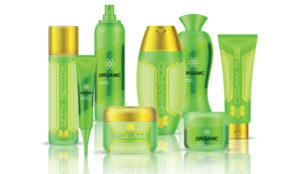While pad printing and digital inkjet technologies for plastics decorating have been around for quite some time, inkjet hasn’t found the same footing that pad printing has enjoyed. However, that doesn’t mean that either technology is necessarily better than the other. Each has its place in the industry and always will. At times, they may even work together for the benefit of the decorator and the customer.
Plastics Decorating sat down with Julian Joffe of Engineered Printing Solutions to discuss some of the developments in pad printing and inkjet and what those developments will mean for the industry in the coming years.
How has pad printing technology changed in the last several years?
The fundamentals of pad printing have remained unchanged for some years now – the biggest single change happened some 15 years back with the advent of the closed-cup system. Since that time, nothing has changed much. However, the adoption of other technologies into the pad printing world is what has changed.
For instance, innovative companies in certain industries are taking advantage of robotics technology. The use of this type of automation has revolutionized pad printing equipment. Additionally, more effective vision systems also are changing the world of pad printing.
Automation must become the first line of defense for technologies like pad printing to remain strong contenders in a globally competitive market. Innovative original equipment manufacturers (OEMs) will always find ways to improve their technologies and implement those changes into the machines they build. This is how they continue to better serve their customers and maintain their leadership status as an OEM in that sphere of industry.
In the next few years, what developments can printers expect to see with direct-to-plastics decorating?

More than likely, analog systems will continue to remain competitive; however, the consumer-driven Internet of Things (IoT) will continue to challenge those analog systems that will, in some instances, be replaced and supplemented by digital printing technologies due to variable data and personalization. The biggest single advantage of digital over analog is, of course, the ability to print on demand with minimal set-up and tooling costs. This feature will allow digital to continue its strong growth in direct-to-plastic object printing. As the cost of equipment continues to decline on a relative basis – due to increased volumes and demand – so will the ROI become more attractive and this upward spiral of demand will accelerate.
As far as decorators are concerned, digital printing means:
- quicker time to market
- shortened development times for new products
- lowered inventories
- ability to create later stage differentiation (within the production cycle)
These are only a few of the advantages that digital has over analog, but these are some of the reasons that digital will eventually find its way into all manufacturing sectors. Digital also will find a place together with analog systems to boost efficiencies, especially when shorter run customization becomes part of every manufacturer’s offerings to meet customers’ demands.
When deciding between pad printing or digital inkjet technologies, what should decorators consider for direct-to-plastic printing?
There are a multitude of aspects to consider when deciding which technology is the best for any given product. The following are just a few:
Production run lengths – What volume of image changeovers will be required?
Variable data – Is it a requirement now or in the future?
Colors required – Inkjet is great for full-color, while monochrome single-color images can be swapped out even for shorter runs.
Changeovers – How often do the products being decorated change? Tooling changeovers can become the bottleneck.
Substrates (shapes/tolerances) – Is the shape easily printed with inkjet? Flatter symmetrical shapes are easier to print, while other shapes can cause headaches. The biggest issue would be the distance from the print head to the surface.
Substrates (materials types) – Inkjet inks may be a challenge in terms of adhesion. Sometimes inkjet inks will require a pretreatment for quality – not only for adhesion but due to relative wet-out on substrates with lower dynes (surface tension).
Substrate colors – Some colors are easier to print than others. White, for instance, is an ideal CMYK inkjet color to print, although not as easy to manage – especially in low-viscosity print heads (such as 1,200 dpi heads when UV inks may be a requirement).
Ink requirements – Some inks, such as UV, may not be ideal.
Image sizes – Larger images take longer to print, and when speed is desired, the wide single-pass machines may be scary when it comes to cost.
Production rates – When real speed is needed, see above comment.
Image detail (resolution, font sizes, etc.) – Get samples printed and make sure they are printed on the production style machines and not some system that is just similar. Case in point: Slower flatbeds will print very differently, in terms of quality and adhesion, when compared with their faster single-pass brethren.
Frequency of product changes – Tooling may be required. When it comes to product changes, high-speed analog systems are extremely costly to change over. Many products in the inkjet world do not require tooling due to the noncontact nature of inkjet. As long as the item is flat and stable on a belt, no tooling is needed. With inkjet the cost of a changeover can be close to zero, depending on whether tooling is required. Analog printers always need some sort of tooling when it comes to object printing; however, that rule does not apply to inkjet.
Image appearance – This is something that is difficult to overcome. Printers who are used to the appearance of a solid spot Pantone color can find looking at that same color in CMYK, especially close up, is very disappointing. Explaining the difference and getting used to it can be a challenge. Printers love the advantages they get from inkjet, but getting them to stop comparing one against the other can be a challenge. It’s important to review the samples alone and make a QC determination based upon what they see vs. something they have been used to looking at for years.
Colors required – Pantone matches and level of Delta E requirements. If it needs to match perfectly, then maybe inkjet is not the solution. The question becomes whether to give up all the flexibility and ROI just to be at a Delta of +/- 0.5. Adding OGV inkjet will reduce the Delta E considerably, especially in certain colors in the typical CMYK range.
No doubt there are other elements to be considered. These are just a few.
What role has automation played in advancing decorating technologies/processes?
In a single sentence, it has been the single biggest contributor to the growth.
Are there ways digital inkjet and pad printing can work together to benefit customers?
Absolutely. In fact, even together in a single system, there may be surfaces that inkjet may be better for – such as a variable piece of data – but other areas where pad printing works best due to shape or product topography. If a never-changing image in monochrome was needed, then pad print could be used. However, if the surface or substrate was difficult, in terms of ink compatibility, then perhaps pad print would need to be used.
There is no single solution that will always work for every scenario, so pad printing and inkjet will always work together, and neither one can replace the other in every scenario.
Julian Joffe is part of the highly experienced team of engineers at Engineered Printing Solutions who contributed to this article as a team. Founded in 1985, EPS is keenly focused on the advancement of direct to substrate inkjet printing. The EPS team includes a full engineering and software development group, technical services, customer service and management team – in total, 75 highly skilled and driven individuals. For more information, visit www.epsvt.com.
Julian Joffe
president/commercial services
Engineered Printing Solutions



